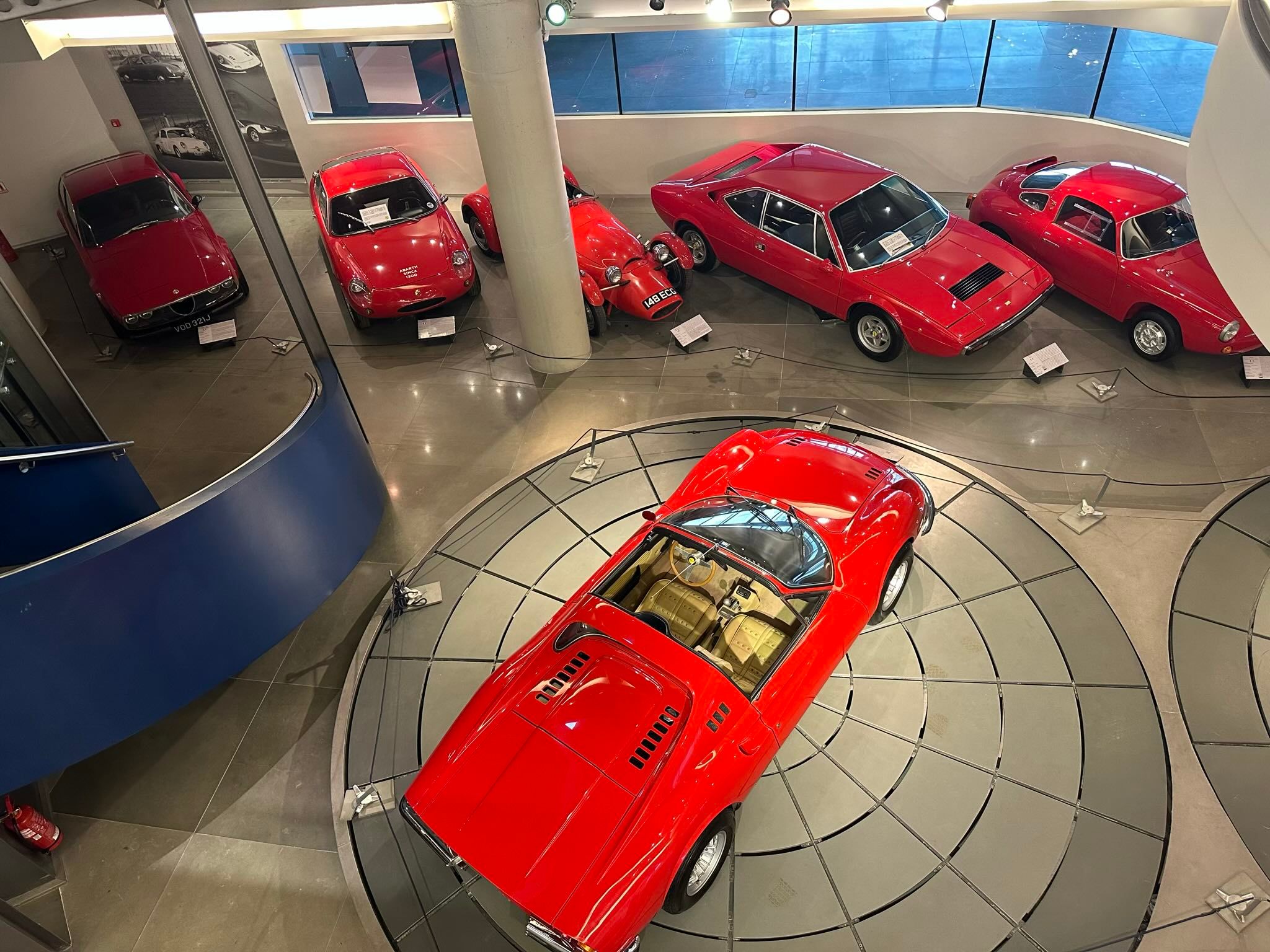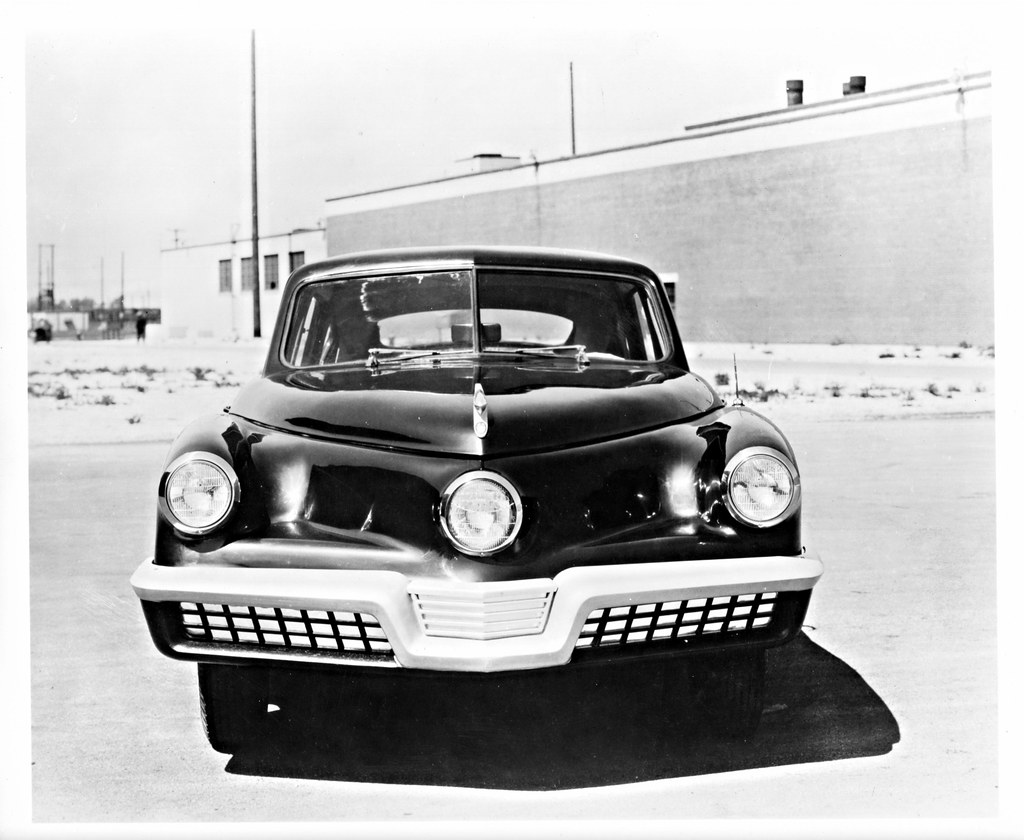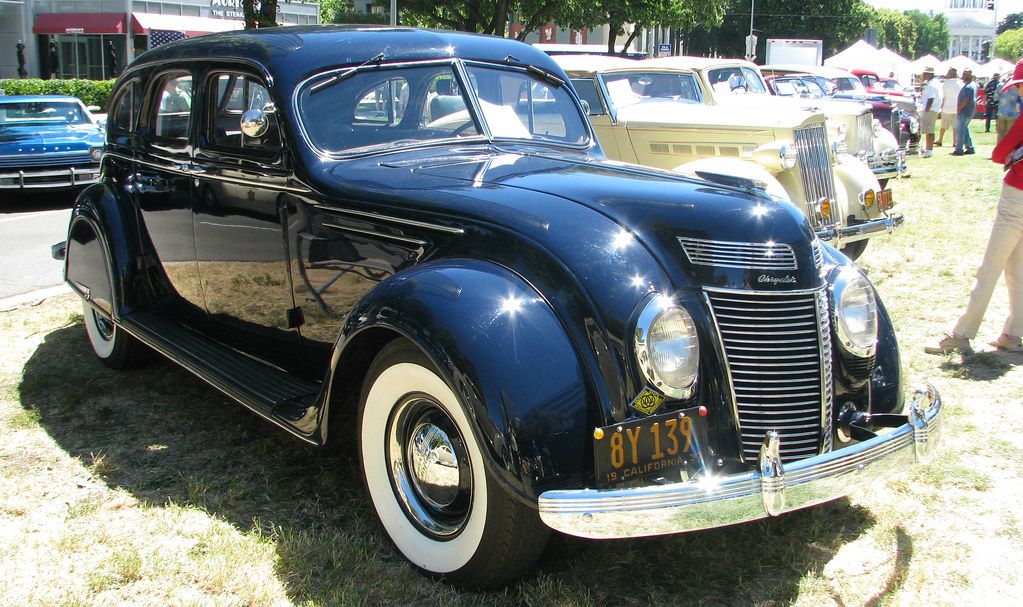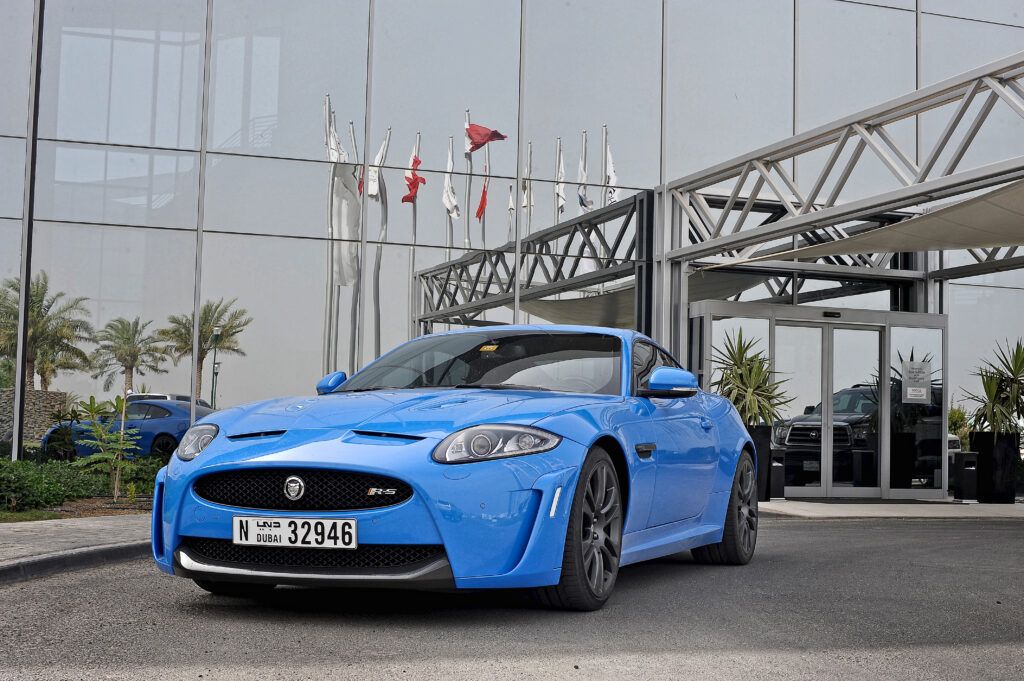
The roar of an engine, the gleam of chrome, the scent of gasoline on a crisp morning – for enthusiasts, these are the sensory hallmarks of automotive passion. We often celebrate the household names, the Mustangs, Corvettes, and Camaros, whose legends are etched deep into the collective consciousness. But beneath the surface of well-trodden history lies a treasure trove of vehicles that were not just cars, but prophecies on wheels – machines so far ahead of their time, they almost baffled the era they were born into.
Automotive innovation is a relentless, often thankless, pursuit. While some breakthroughs are met with immediate acclaim, others arrive too early, too radical, or too misunderstood to seize their rightful place in the spotlight. These are the unsung heroes, the quiet revolutionaries that introduced features, performance, and designs that wouldn’t become mainstream for decades, only to be unfairly overshadowed or simply forgotten.
Today, we embark on a thrilling journey back through time, from the ’30s to the ’80s and beyond, to unearth 14 such pioneers. These are the cars that didn’t just break the mold; they smashed it, paving the way for technologies we take for granted today, from advanced safety systems to sophisticated engine designs and revolutionary vehicle concepts. Fasten your seatbelts, because we’re about to explore the machines that saw tomorrow coming long before the rest of us did.

1. **Tucker 48 (1948-1949)**Preston Tucker’s ambitious sedan was a meteoric flash across the post-war automotive sky, a car so radical it seemed to predict the future. Imagine, in 1948, a car boasting a rear-mounted engine, disc brakes, and a unique third headlight that actually turned with the steering wheel. These were not mere novelties; they were innovations that wouldn’t become commonplace on mainstream production cars until the 1960s and even further into the future.
Beyond its mechanical marvels, the Tucker 48 was an absolute fortress of safety, a concept often overlooked in its era. Its engineering was, without exaggeration, decades ahead of Detroit’s conventional offerings, featuring a comprehensive suite of safety features designed to protect its occupants. However, the dream was tragically short-lived, as political and financial troubles conspired to kill off this visionary project after a mere 51 units were ever built, cementing its status as one of the most forward-thinking production cars ever conceived.
The story of the Tucker 48 is a poignant reminder that sometimes, being too far ahead of your time can be a curse rather than a blessing. It was a car that offered a glimpse into an automotive future where safety and cutting-edge engineering were paramount, a future that, ironically, wouldn’t fully arrive until long after the Tucker itself had faded into legend.
2. **Studebaker Avanti (1962-1963)**In an era where American cars were often defined by their chrome and bulk, the Studebaker Avanti arrived like a visitor from another planet. Penned by the visionary Raymond Loewy’s team in a whirlwind of just over a month, its fiberglass bodywork and striking, angular lines looked as if they had driven straight out of the 1980s. This wasn’t just a car; it was a sculpture of speed, a testament to what bold design could achieve when unshackled from convention.
The Avanti’s appeal wasn’t merely skin deep. Beneath its distinctive “Coke bottle” shape lay a host of advanced features that were remarkably progressive for 1962. It boasted advanced aerodynamics, a feature many manufacturers would only seriously embrace years later, contributing to its impressive performance envelope. Furthermore, it featured disc brakes, a significant safety and performance upgrade when most other cars were still relying on drum brakes, marking it as a true engineering standout.
Powering this futuristic machine was a supercharged 289 V8 engine, an absolute powerhouse for its time, capable of propelling the Avanti to a breathtaking 170 mph. This made it one of the fastest production cars of its era, a genuine high-performance machine wrapped in a distinctly European-inspired package. Despite its groundbreaking design and performance, Studebaker’s well-documented financial woes meant that the Avanti’s factory production run lasted only two model years, leaving behind a legacy of innovation tragically cut short.
Car Model Information: 1963 Studebaker Avanti R1
Name: Studebaker Avanti
Caption: 1963 Studebaker Avanti
Manufacturer: Studebaker
Aka: Avanti
Production: 1962: 1,200;
Assembly: Studebaker Corporation#Studebaker Factories,South Bend, Indiana
Predecessor: Studebaker Gran Turismo Hawk
Class: Personal luxury car
BodyStyle: coupe
Layout: FR layout
Engine: 289 CID
Abbr: on
Transmission: Manual transmission
Wheelbase: 109 in
Length: 192.4 in
Width: 70.3 in
Height: 53.8 in
Weight: 3095 lb
Related: Studebaker Lark
Designer: Raymond Loewy#Avanti
Categories: All articles with incomplete citations, Articles with incomplete citations from September 2018, Articles with short description, CS1 errors: missing title, Cars discontinued in 1963
Summary: The Studebaker Avanti is a personal luxury coupe manufactured and marketed by Studebaker Corporation between June 1962 and December 1963. A halo car for the maker, it was marketed as “America’s only four-passenger high-performance personal car.”
Described as “one of the more significant milestones of the postwar industry”, the Raymond Loewy-designed car offered safety features and high-speed performance. Called “the fastest production car in the world” upon its introduction, a modified Avanti reached over 170 mph (270 km/h) with its supercharged 289-cubic-inch (4,740 cm3) R3 engine at the Bonneville Salt Flats. In all, it broke 29 world speed records at the Bonneville Salt Flats.
Following Studebaker’s discontinuation of the model, a succession of five ventures manufactured and marketed derivatives of the Avanti model through 2006. These ventures licensed intellectual property and, in some cases procured parts, through arrangements with the successors to the Studebaker assets.
Get more information about: Studebaker Avanti
Buying a high-performing used car >>>
Brand: Studebaker Model: Avanti
Price: $17,500 Mileage: 0 mi.

3. **Citroën DS (1955-1975)**If ever there was a car that seemed to defy the laws of physics, it was the Citroën DS. Unveiled in 1955, this French marvel looked like it had landed from another planet, with a sleek, aerodynamic body that was both elegant and profoundly functional. Its slippery shape not only captivated onlookers but also helped it achieve remarkable fuel economy for its size, a foresight that was truly astounding for the mid-1950s.
However, the DS’s true genius lay beneath its revolutionary skin, in its legendary self-leveling hydropneumatic suspension. This wasn’t merely a sophisticated shock absorber system; it was a technological tour de force that allowed the car to literally rise and fall at the touch of a button, offering an unparalleled ride quality that no American car could even dream of matching. Journalists of the time were floored, and engineers were left stunned by its capabilities.
Beyond the suspension, the DS was packed with other forward-thinking features, including power steering and disc brakes – innovations that, while not unique, were exceptionally well-integrated and advanced for 1955. While American buyers sometimes found its complexity a bit “weird,” the DS’s profound influence on modern luxury car features and its reputation for comfort and advanced engineering remain undeniable. Even today, the DS feels less like a classic car and more like a science project that somehow made it to the showroom.

4. **Oldsmobile Toronado (1966-1970)**The 1966 Oldsmobile Toronado was a bold declaration from General Motors, shattering conventional wisdom with a daring engineering choice. It was the first American front-wheel-drive car since the Cord 810 in the 1930s, and Oldsmobile approached this challenge with an audacious spirit. They didn’t just reintroduce FWD; they reimagined it for power and performance, proving that this layout could handle serious horsepower.
Under its dramatic, futuristic styling – featuring hidden headlights and a wide, imposing stance – lay a massive 425-cubic-inch V8 engine, churning out a formidable 385 horsepower. This potent engine was paired with a sophisticated transaxle setup, a chain-driven TH-425 transmission, which was an unusual and incredibly effective arrangement for sending such power to the front wheels. The result was a car that not only looked like it came from the future but drove like it too.
The Toronado didn’t just offer raw power; it delivered better traction and a flat floor, significantly enhancing interior space and comfort. While its front-wheel-drive layout never quite caught on in traditional muscle cars, it laid a crucial blueprint, influencing an entire generation of GM front-drivers and previewing what luxury coupes would eventually become. Despite its immense engineering prowess and dramatic looks, the Toronado is often overlooked in favor of its Cadillac Eldorado sibling, a quiet innovator in its own right.
Car Model Information: 1976 Oldsmobile Toronado Brougham
Name: Oldsmobile Toronado
Caption: 1966 Toronado
Manufacturer: Oldsmobile
Production: 1965–1992
ModelYears: 1966–1992
Class: Full-size,personal luxury car
BodyStyle: coupe
Platform: GM E platform
Layout: FF layout
Related: Cadillac Eldorado,Buick Riviera
Categories: 1960s cars, 1970s cars, 1980s cars, 1990s cars, All Wikipedia articles written in American English
Summary: The Oldsmobile Toronado is a personal luxury car manufactured and marketed by the Oldsmobile division of General Motors from 1966 to 1992 over four generations. The Toronado was noted for its transaxle version of GM’s Turbo-Hydramatic transmission, making it the first U.S.-produced front-wheel drive automobile since the demise of the Cord 810/812 in 1937.
The Toronado used the GM E platform introduced by the rear-wheel drive Buick Riviera in 1963 and adopted for the front-wheel drive 1967 Cadillac Eldorado. The three models shared the E platform for most of the Toronado’s 26-year history.
Get more information about: Oldsmobile Toronado
Buying a high-performing used car >>>
Brand: Oldsmobile Model: Toronado
Price: $14,500 Mileage: 85,598 mi.

5. **Chrysler Airflow (1934-1937)**Okay, so the Chrysler Airflow technically hails from the 1930s, a bit before our main ’50s-’80s window, but its significance is so profound it absolutely demands inclusion. This car wasn’t just ahead of its time; it was practically teleported from the future, pioneering aerodynamic design and unibody construction decades before they became standard practice in the automotive industry. Its arrival was akin to bringing a jet engine to a steam locomotive convention.
The Airflow’s sleek, wind-tunnel-tested shape was revolutionary, a radical departure from the boxy, upright vehicles that dominated the roads in the Depression era. Chrysler had the audacity to defy contemporary styling conventions, recognizing that the battle against wind resistance was crucial for efficiency and performance. Furthermore, its integrated body structure, a true unibody design, offered superior strength and rigidity compared to the traditional body-on-frame construction of the day, setting a new benchmark for structural integrity.
However, its boldness proved to be its undoing. Depression-era buyers, steeped in tradition and wary of anything too radical, simply found the Airflow too unconventional, too alien. While Chrysler’s ambitious experiment nearly bankrupted the company due to poor sales, it undeniably laid the foundational groundwork for modern car construction and design principles. The Airflow may have been a commercial flop, but it was a prophetic triumph, a car that literally shaped the future of automotive engineering.
Read more about: More Than Rust: 1930s Automotive Legends That Still Capture Hearts

6. **Saab 900 Turbo (1980)**While turbocharging wasn’t entirely new in 1980, the Saab 900 Turbo wasn’t just another car with forced induction; it was the vehicle that truly brought turbo technology to the everyday driver, proving it could be both performance-enhancing and practical. Before Saab, turbos were often seen as temperamental, laggy, and confined to high-strung sports cars. The 900 Turbo changed that perception entirely.
Under its distinctively quirky, boxy European body, the 900 Turbo packed a 2.0L turbocharged four-cylinder engine making around 143 horsepower – solid numbers for the early 1980s. What set it apart was Saab’s sophisticated engine management and turbo technology, which delivered smooth, reliable boost, transforming the little hatchback into a car that punched well above its weight. It showed that performance didn’t have to mean massive V8s and rear-wheel drive.
Beyond its groundbreaking powertrain, the Saab 900 Turbo was a smart car before the term existed. It offered advanced safety features for its time, including a wraparound windshield for exceptional visibility, and creature comforts like heated seats. Its front-engine, front-wheel-drive layout, combined with its distinctive Swedish engineering, appealed to a devoted following, but its technical innovations – particularly in mainstream turbocharging – never received the broader recognition they truly deserved in the wider automotive market.
Car Model Information: 2017 Chevrolet Corvette Stingray
Name: Saab 900
Caption: Saab 900 SE Turbo 3-door
Manufacturer: Saab-Scania,Saab Automobile
Production: 1978–1998
Assembly: Sweden:,Trollhättan,Arlöv,Malmö,Uusikaupunki
Class: Compact executive car
Layout: Front-engine, front-wheel-drive layout
Predecessor: Saab 99
Successor: Saab 9-3
Categories: 1980s cars, 1990s cars, All Wikipedia articles needing clarification, All articles needing additional references, All articles that may contain original research
Summary: The Saab 900 is a mid-sized automobile produced by Swedish manufacturer Saab from 1978 until 1998 in two generations: the first from 1978 to 1994, and the second from 1994 to 1998.
The first-generation car was based on the Saab 99 chassis, though with a longer front end to meet U.S. frontal crash regulations and to make room for the turbo-charged engines, air conditioning and other equipment that was not available in the early days of the 99 model. The 900 was produced in 2- and 4-door sedan, and 3- and 5-door hatchback configurations and, from 1986, as a cabriolet (convertible) model. There were single- and twin-Zenith carburettor; fuel injected, and turbocharged engines, including Full Pressure Turbo (FPT) and, in European models during the early 1990s, Low Pressure Turbos (LPT).
Get more information about: Saab 900
Buying a high-performing used car >>>
Brand: Saab Model: 900 Turbo
Price: $43,242 Mileage: 30,380 mi.

7. **1958 Chrysler Imperial – Factory Cruise Control**Before the idea of long highway journeys was fully ingrained in the American psyche, and certainly before automated features became commonplace, the 1958 Chrysler Imperial offered something truly extraordinary: “Auto-Pilot.” This wasn’t some fleeting gimmick or an aftermarket add-on; it was the first true, factory-installed cruise control system, a pioneering step into automotive autonomy.
Developed with the ingenious assistance of a blind inventor named Ralph Teetor, this system allowed drivers to effortlessly maintain a steady speed, a concept almost fantastical in an era when most cars didn’t even come with seatbelts as standard. For its time, this was the pinnacle of luxury and technological advancement. While other cars required constant pedal input, the Imperial allowed its driver to glide along like a Cadillac on a cloud, a testament to forward-thinking engineering.
Car Model Information: 1991 Chrysler Imperial Base
Name: Chrysler Imperial
Caption: Chrysler Imperial Series CG Sedan, 1931
Manufacturer: Chrysler (division)
Production: 1926–1954,1989–1993
ModelYears: 1926–1954,1990–1993
Layout: FR layout
Class: Full-size car
Categories: 1930s cars, 1940s cars, 1950s cars, 1990s cars, 24 Hours of Le Mans race cars
Summary: The Chrysler Imperial, introduced in 1926, was Chrysler’s top-of-the-line vehicle for much of its history. Models were produced under the Chrysler name until 1954, after which Imperial became a standalone make; and again from 1990–93. The company positioned the cars as a prestige marque to rival Cadillac, Continental, Lincoln, Duesenberg, Pierce Arrow, Cord, and Packard. According to Antique Automobile, “The adjective ‘imperial’ according to Webster’s Dictionary means sovereign, supreme, superior or of unusual size or excellence. The word imperial thus justly befits Chrysler’s highest priced model.”
For several decades and multiple generations, the Imperial was the exclusive Chrysler and the favorite choice of luxurious transportation for senior executive leadership, government officials, royalty and various celebrities in comparison to the more affordable Chrysler New Yorker. Over the years the appearance, technological advancements and luxurious accommodations updated with the latest trends and fashionable appearances. Limousines, town cars and convertibles were the usual appearances, while special coachwork choices were provided by the industry’s best providers, to include Derham, Fleetwood, LeBaron, and others.
The Chrysler Imperial rose was cultivated in 1952 and used to promote the brand.
Get more information about: Chrysler Imperial
Buying a high-performing used car >>>
Brand: Chrysler Model: Imperial
Price: $7,749 Mileage: 113,461 mi.
Read more about: Legends Lost: Revisiting the Classic American Cars of the ’50s and ’60s That Defined an Era and Vanished
This innovation transformed the driving experience, making long distances significantly less fatiguing and bringing a touch of space-age convenience to the average motorist. The ability to set your speed and simply cruise was nothing short of revolutionary. The 1958 Chrysler Imperial demonstrated that comfort and convenience could be integrated into the core driving experience decades before such features became an expectation rather than an astonishing luxury.


